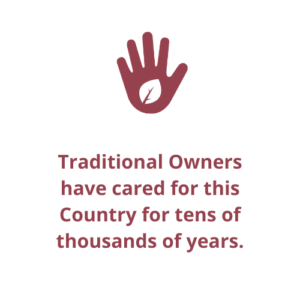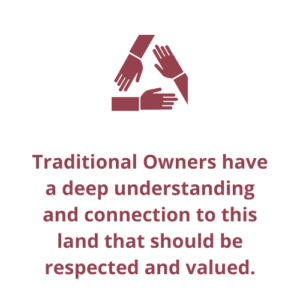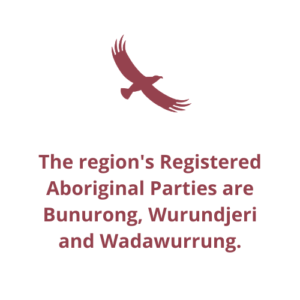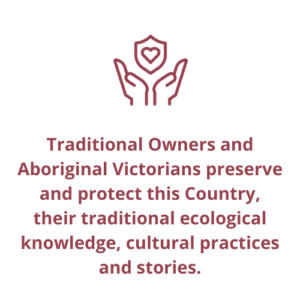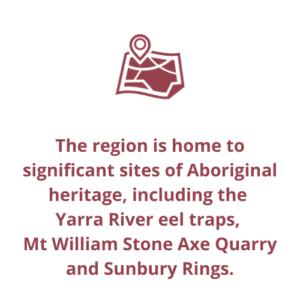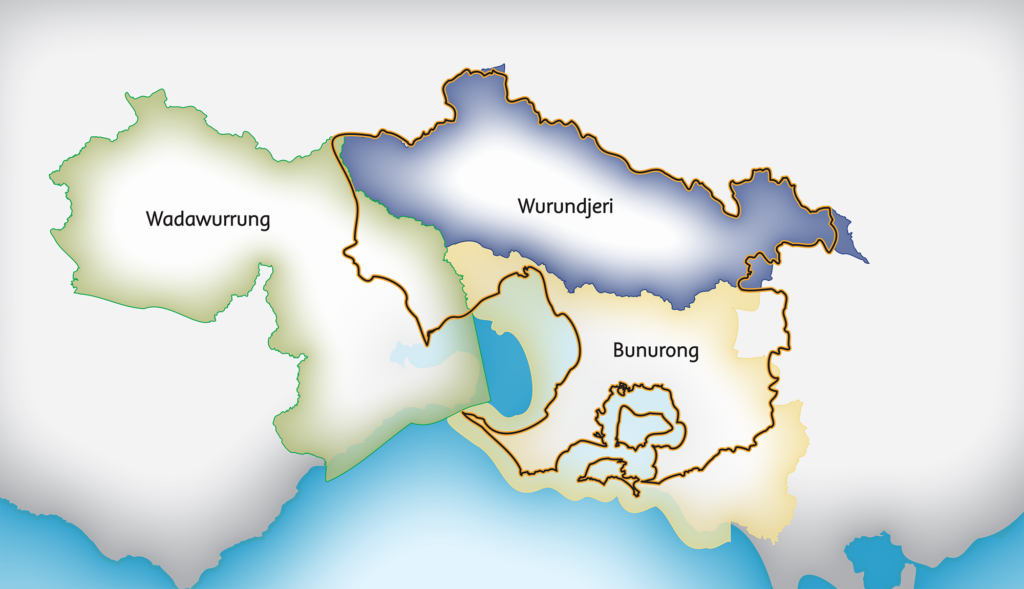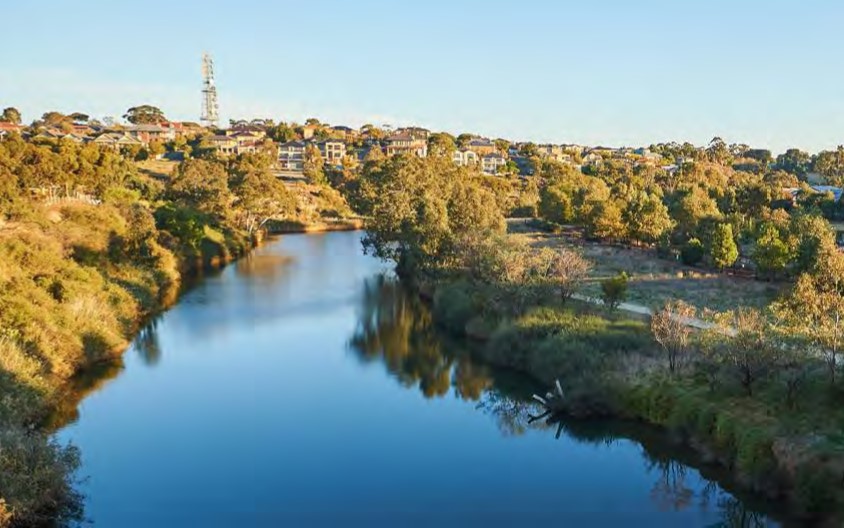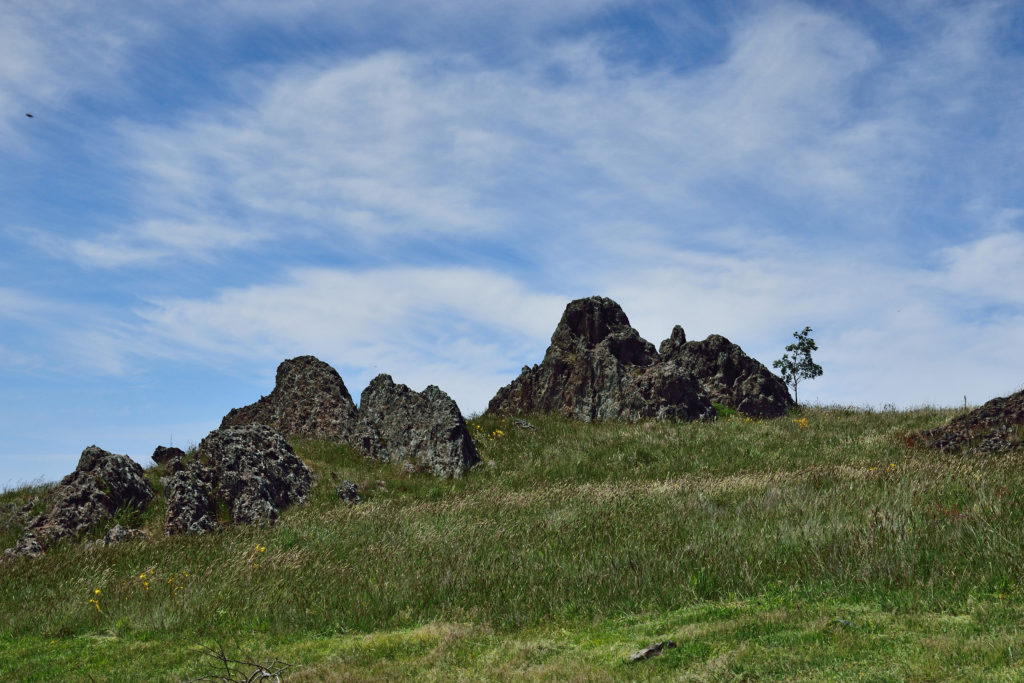Traditional Owners have always cared for this Country, and always will
For thousands of years, this region was occupied and cared for by a number of Aboriginal clans. They fished and hunted in the waters of the area and harvested food from the bush and grasslands. Archaeological evidence at the Murrup Tamboore site north of Melbourne shows the land, coasts and waterways of the Port Phillip & Western Port region were supporting Aboriginal people at least 31,000 years ago.
Their wisdom and skills have enabled life in harmony with the landscapes and ecosystems. For Aboriginal people, managing the land and waters was done, and continues to be done, in ways that maintain both the environmental and community health. This has included active and adaptive approaches, using fire, animal traps and vegetation management as integral management tools for maintaining productive and healthy landscapes.
With the arrival of Europeans and the subsequent colonisation that was turbulent and often violent, some Aboriginal traditional ecological knowledge for land and water management has been lost or sidelined through the past 200 years. Of the 1.3 million hectares of land in this region, less than 1,000 hectares is now under Aboriginal community ownership and/or management.
However, the knowledge and practices of Traditional Owners remain important and there is a resurgence in their use as they are increasingly embraced and re-applied in today’s management of natural resources.
The Traditional Owners of this region – the Bunurong, Wurundjeri Woi-wurrung and Wadawurrung Peoples – actively seek for the philosophy of Caring for Country to be embraced and at the centre of conservation planning and practice to restore, sustain and improve this Country. Ongoing support must be provided to Traditional Owners to care for Country and foundational activities must be strengthened to include Traditional Owners in decision making, planning and determination of priorities on their Country.
Policy and planning
Internationally, the United Nations Declaration on the Rights of Indigenous Peoples (UNDRIP) is the most comprehensive instrument on the rights of Indigenous peoples. It establishes a universal framework of minimum standards for the survival, dignity and well-being of the Indigenous peoples of the world. The Declaration is particularly significant because Indigenous peoples, including Aboriginal and Torres Strait Islander peoples, were involved in its drafting. Australia endorsed the declaration in 2009.
In Victoria, Traditional Owners have rights and responsibilities as Registered Aboriginal Parties under the Victorian Aboriginal Heritage Act 2006. The Aboriginal Heritage Regulations 2018 give effect to the Act, prescribe standards, set out the circumstances in which a Cultural Heritage Management Plan should be prepared and set fees and charges. Victoria’s whole-of-government commitments are set out in the Victorian Aboriginal Affairs Framework as the overarching framework for working with Aboriginal Victorians, organisations and the wider community to drive action and improve outcomes. The VAAF Self-Determination Reform Framework guides government and agencies to enable action towards Aboriginal self-determination.
In Victoria, an important process is also under way to advance to Treaty. The first phase of Victoria’s treaty process focused on community engagement and the design and establishment of the First Peoples’ Assembly of Victoria (Assembly), the first democratically elected representative body for Traditional Owners of country and Aboriginal Victorians in the state’s history. The Assembly is now working in partnership with the Victorian Government to establish the elements required to support future treaty negotiations. The Yoo-rrook Justice Commission has also been established for truth telling, truth listening and to recommend ways to address and redress systemic injustice against Aboriginal Victorians since colonisation. It will deliver a final report in June 2024.
In regard to natural resource management, the Victorian Traditional Owner Cultural Landscapes Strategy has been developed and written by Traditional Owners with support from the Victorian Government and land management agencies. It provides a framework for Traditional Owners to lead the management of Country in line with cultural obligations. The Pupangarli Marnmarnepu ‘Owning Our Future’ – Aboriginal Self-Determination Reform Strategy was developed by the Victorian Government with the aim of partnering with Traditional Owners and Aboriginal Victorians to advance self-determination and achieving a future where Victoria’s First Peoples are in control of their own future, and it outlines a commitment that other Victorian Government bodies follow.
At a local level, Whole of Country Plans are overarching, long-term plans developed by Traditional Owners that set out goals, priorities, principles of engagement and measures of success in caring for their Country.
Traditional Owners caring for Country today
This region is the Country of the Bunurong, Wurundjeri Woi-wurrung and Wadawurrung people. They have lived in and been connected to the land, water, plants and animals of this area for many thousands of years.
Registered Aboriginal Parties and other Aboriginal organisations
The Bunurong Land Council Aboriginal Corporation, Wurundjeri Woi-wurrung Cultural Heritage Aboriginal Corporation and Wadawurrung Traditional Owners Aboriginal Corporation are the Registered Aboriginal Parties for land in this region.
There are other Aboriginal organisations resident and active in the area and many Aboriginal and Torres Strait Island people from across Victoria and Australia who are living in or visiting the area.
Aboriginal organisations active in the region include the Boon Wurrung Foundation, Willum Warrain Aboriginal Association, Wathaurong Aboriginal Cooperative, Wyndham Aboriginal Community Centre, Casey Aboriginal Gathering Place, Nairm Marr Djamban Gathering Place, Babarrunin Beek Aboriginal Gathering Place, Mullum Mullum Indigenous Gathering Place and Wandoon Estate.
Whilst Registered Aboriginal Party boundaries exist, they don’t always accurately define Country as seen by some Traditional Owners.
Aboriginal heritage sites
Protecting Aboriginal heritage sites is a vital platform for generational healing for Aboriginal people. Sites, place and Country encourage questions, truth-telling and respect. They enable Aboriginal history to be recorded and preserved for the next 1,000 plus generations. This is imperative. It supports and maintains the survival of Aboriginal people, place, Country and culture. The right to be involved in decision making is extremely empowering for Aboriginal people. It is the foundation for good, open and transparent relationships.
Aboriginal Victoria manages the Victorian Aboriginal Heritage Register that holds information about known Aboriginal cultural heritage places and objects within Victoria. Traditional Owners use the register to store cultural heritage place descriptions and information. Access to the register and information about many sites is restricted to protect them from inappropriate use, disturbance or vandalism.
There are approximately 9,200 cultural heritage places in this region identified in the register. They include middens, gathering places, burial sites, scar trees, watering and food gathering sites. However, tragically, many sites and places that are included in the register have been destroyed or lost through urban development or other processes. This highlights a need for better systems to identify and protect cultural heritage.
| Data at June 2021 | Bass Coast, South Gippsland & islands | Casey, Cardinia & Baw Baw | Mornington Peninsula | Yarra Ranges & Nillumbik | Urban Melbourne | Macedon Ranges, Hume, Mitchell & Whittlesea | Melton, Moorabool, Wyndham & Greater Geelong | Total |
|---|---|---|---|---|---|---|---|---|
| Number of registered Aboriginal cultural heritage sites | Approx. 500 | Approx. 1,280 | Approx. 850 | Approx. 860 | Approx. 1,490 | Approx. 1,770 | Approx. 2,340 | Approx. 9,200 |
Country is much more than known sites of significance
It is very important to recognise that Country is much more than just the important sites and artefacts listed in the Register. Country is the connection of land and spirit forged over countless generations and includes tangible and intangible values.
As described from the Wurundjeri Woi-wurrung viewpoint as part of development of the Yarra Strategic Plan:
Wurundjeri Woi-wurrung people are often called on to outline or describe where there are sites of significance or cultural value. When referring to ‘place’ within Wurundjeri Woi-wurrung Country, it is as much based upon emotion, knowledge, stories and intangible value as it is on artefacts and tangible heritage.
Place boundaries are mutable and movable, shifting location even between individuals. These are concepts that do not always align with the modern legal process of property boundaries, values, and ownership which restrict access and defined land use.
All of Country is important to Wurundjeri Woi-wurrung people, being a continuous and interconnected landscape. Wurundjeri Woi-wurrung values do not end at property boundaries and do not just occur on Crown land. Some places will have values that are not public knowledge. There are places across Wurundjeri Woi-wurrung Country which contemporary Wurundjeri Woi-wurrung people are yet to reconnect with as access to cultural landscapes has been disrupted for many generations. Place and space are conceptually different and a Place may be linked by many points through song lines, stories, view lines, and some links may be astrological. There are also areas that are unknown, such as ancient billabongs and waterways.
Some well-known sites of cultural significance in the Port Phillip and Western Port region
The Waterways of the West area includes the Maribyrnong (Mirangbamurn) River and the Werribee River (Wirribi Yaluk), Moonee Ponds (Moonee Moonee) Creek, the Little River (Worrin-yaloke) and Laverton, Skeleton and Kororoit creeks.
The Bunurong, Wadawurrung and Wurundjeri Woi-wurrung Traditional Owners have managed the Waterways of the West and the landscapes through which they flow for over a thousand generations; and through their association and relationship with Country, continue to maintain unique cultural and spiritual connections to the waterways and their lands.
The Waterways of the West are recognised as ‘living and integrated natural entities‘ and the Traditional Owners are recognised as the ‘voice of these living entities’.
Mt William Stone Hatchet Quarry in Wurundjeri country in the north of this region which was the source of highly valued greenstone hatchet heads.
Mount William or Wil-im-ee Moor-ring (Woi-wurrung for tomahawk place) hatchet heads were prestigious items traded over much of south eastern Australia, creating social links and obligations between neighbouring groups.
Stone hatchets were an essential part of Aboriginal life and were often attached to a wooden handle and used to cut off sheets of bark for huts or canoes, shape wood into shields, clubs and spears, cut hollows in trees to catch possums and split trunks open to get honey, grubs or insect eggs.
Coranderrk was established in 1863 as a 2,300 acre reserve for the Aboriginal people of south-central Victoria. Indigenous testimony shows that Coranderrk was productive and profitable in its early years. However, Aboriginal control and management of the site diminished over the ensuing decades under the colonial policies of the time and living conditions for the Aboriginal people declined. There were protests but, despite their efforts to retain management of the land and their community, the Coranderrk community could not overcome overwhelming pressure from settlers and developers to sell or lease portions of Coranderrk.
From the 1890s, portions had been carved off the holding, acres leased and an illegal road built. Coranderrk was officially closed as an Aboriginal station in 1924. The last Kulin resident died in 1944. In 1948 the remaining reserve was divided up for soldier settlement. In 1991, Coranderrk cemetery was handed back to the Wurundjeri people. In 1998, with help from the Indigenous Land Corporation, the descendants of the Coranderrk community were able to buy back a small portion of the land that was taken from their ancestors. It was also added to the Australian National Heritage List in 2011.
Coranderrk remains to this day a place of huge significance for Wurundjeri Woi-wurrung and other Kulin people.
Garambi Baan aquaculture area at Warrandyte has a large rock formation across the Birrarung (Yarra River) that Wurundjeri Woi-wurrung people used for eel trapping during the eel migration period in late February and early March each year.
The natural rock formations were enhanced by placing stones to channel the eels into races where they were either caught in woven eel traps or caught by hand. This is one of only a few known remaining iuk (eel) traps that were once found along the length of the Birrarung and the Maribyrnong River.
Nearby is a freshwater mussel farm. Mussels were a staple part of the Aboriginal diet. In early Spring they were collected in their hundreds and buried in earthen pits for later use when the river was in flood. These pits were made by a metre deep hole being dug in the damp soil above the flood line. The mussels were then buried and once the soil was on top, the mussels would go into suspended animation and stay fresh in these ‘refrigerators’ for up to two years. Also nearby is a deep water area that was maintained by the Wurundjeri Woi-wurrung as a fish and yabbie nursery.
The Sunbury Rings Complex owned and managed by the Wurundjeri Woi-wurrung people contains three of only five known earth rings in Victoria.
The rings, all in close proximity of each other, are estimated to be approximately 1,000 years old and thought to be created by continual scraping back of earth and grass from the centre of each circle. They have been included on the Register of the National Estate.
The property has significant cultural value as an important local ceremonial area and the property itself has a commanding view north and south along Jacksons Creek and the escarpment on the eastern side. There are other important cultural sites all along the valley including an ochre mine and silcrete quarry.
Aboriginal voice and representation in natural resource management
Through much of the time since European settlement, many Traditional Owners and Aboriginal people have been tragically displaced from their Country, dispossessed of land, marginalised within society, disadvantaged and discriminated against. Over this time, there has been very little opportunity for their traditional ecological knowledge, which cared for this Country for many thousands of years, to be understood, valued and implemented in the management of the land, water and biodiversity of this region.
However, in recent decades, there is a positive trend with rights, knowledge and aspirations of Traditional Owners being increasingly recognised and supported, including increasing roles and involvement of Traditional Owners and Aboriginal people in natural resource management.
For example, a historic moment occurred in 2017 when Wurundjeri Woi-wurrung Elders addressed the Victorian Parliament in both English & Woi-wurrung language for the first time, to explain their connection to the Yarra River (Birrarung) and the importance of protecting the river for generations to come. This accompanied the introduction of the Yarra River Protection (Wilip-gin Birrarung murron) Act 2017 which was the first legislation in Australia to be co-titled in a Traditional Owner language. ‘Wilip-gin Birrarung murron’ translates as ‘keep the Birrarung alive’ in Woi-wurrung. The legislation was also a Victorian and Australian first in legally identifying a large river and its corridor, which transverses many boundaries, as a single living and integrated natural entity for protection.
Similarly, the Victorian Government has developed a new Waterways of the West Action Plan to ensure that Melbourne’s western waterways are healthy and thriving for years to come. The process to develop the plan strongly recognised that rivers, streams and creeks have special significance for Traditional Owners, encompassing cultural, spiritual, social, economic and environmental values. A Ministerial Advisory Committee was appointed to work with the community, Traditional Owners and industry to present a range of recommendations for the plan to the Government, with five of the committee’s eight members being Wurundjeri or Wadawurrung people. The committee participated in cultural induction training and Walks on Country with the Wurundjeri Woi wurrung and Wadawurrung Traditional Owners. The Waterways of the West Action Plan was released in late 2021 recognising these waterways and landscapes as ‘living and integrated natural entities‘ and the Traditional Owners as the ‘voice of these living entities’.
In regard to high-level representation and organisational partnerships, there is increasing representation of Aboriginal people on the Boards of natural resource management organisations such as water corporations and Catchment Management Authorities across Victoria, and there are numerous Partnership Agreements and Memoranda of Understanding being developed between such organisations and Registered Aboriginal Parties.
Reconciliation action plans are being developed and adopted by many organisations to advance the understanding and respect for Aboriginal culture and history, and work practices such as participation in cultural awareness activities, recognition of important days, Welcome to Country ceremonies and Acknowledgement of Traditional Owners are becoming embedded and valued.
Also growing amongst many organisations is a focus on providing or supporting training and employment opportunities for Aboriginal people. This can include direct employment opportunities, sponsoring jobs in Aboriginal organisations and ensuring procurement processes consider purchasing goods and services from Aboriginal organisations where appropriate. In 2020, the State of the Public Sector Report indicated around 1 per cent of the Victorian public sector workforce identify as Aboriginal or Torres Strait Islander.
Country Plans
As Registered Aboriginal Parties, the Bunurong Land Council Aboriginal Corporation, Wurundjeri Woi-wurrung Cultural Heritage Aboriginal Corporation and Wadawurrung Traditional Owners Aboriginal Corporation each prepare a Country Plan as the overarching, long-term plan that sets out goals, priorities, principles of engagement and measures of success in caring for their Country.
Bunurong Country Plan
The Bunurong Country Plan is in preparation.
Wurundjeri Country Plan
The Wurundjeri Country Plan is in preparation.
Preceding the Country Plan, the Wurundjeri Woi-wurrung people have stated the following in their ‘Community statement’ in the Protecting the Waterways of the West Discussion Paper. These principles may help provide a basis for the Country Plan which will apply for all of Wurundjeri Woi-wurrung Country.
Our message is that Wurundjeri Woi wurrung people have a deep understanding and knowledge of Country as well as rights to Country, and that this should be valued and respected.
The Wurundjeri Woi wurrung people have an unbroken relationship with Country, caring for this land, its waterways, its plants and animals. Our Ancestral spirits and stories are part of this Country.
There is a deep cultural obligation and birthright to look after Country and keep it healthy. We honour the lost clans and families of the Woi wurrung that did not survive settler policies and practices: the Gunung-Willam-Balluk, Kurung-jang-Balluk and Marin Balluk.
Today our Country is shared with Victorians from many different backgrounds. We believe that Wurundjeri Woi wurrung people must be enabled to take a leading role in working with all state agents as well as communities on matters of Country.
As Traditional Owners, we seek to build solid, working relationships and partnerships across our traditional Country to protect, manage and restore the land and water today and for the future generations.
We have the right and the obligation to speak for Country.
Wadawurrung Healthy Country Plan
The Paleert Tjaara Dja – Let’s make Country good together 2020-2030 – Wadawurrung Country Plan invites respectful working and learning, and committed, sharing approach based on cultural knowledge and practices. The principles that guide the plan and partnerships in Caring for Country are:
- Respect and Acknowledgement for Wadawurrung Traditional Owners and our cultural, ancestral, spiritual and historical connections to Country.
- Wadawurrung people’s right to access and care for Country as an expression of our cultural obligation, responsibilities, connectedness, our well-being and as our economic basis.
- Country is interconnected, alive with dreaming and creation stories, imprinted with our cultural values and social history – there is no separation between cultural and natural resources and people.
- Free, prior and informed consent requires genuine engagement from the beginning of decision-making or project planning in a way that is relevant to us, providing timely information and processes that support cultural governance.
- We seek partnerships that are genuine, are of benefit to Wadawurrung people, are in the spirit of reconciliation, that address past negative impacts and enable self-determination and real outcomes.
- Providing appropriate and equitable resourcing for Wadawurrung people to participate in their obligation of care and management of Country.
- Open and honest relationships that sustain effective working partnerships.
- Wadawurrung Traditional Owners are the holders of cultural knowledge.
- Respect for and appropriate protection of our intellectual and cultural property rights in sharing information.
Key challenges and opportunities
Challenges for increasing the protection of Aboriginal cultural heritage, increasing the role of Traditional Ecological Knowledge and increasing the Aboriginal leadership and influence in natural resource management include the following:
Urban development
Much of the Country in this region has been substantially modified by urban development, and significant further urban development is planned. As the population grows and the urban area expands, there is great risk that sites of cultural significance and landscapes will be damaged or lost forever. There are challenges in ensuring urban development meets cultural heritage regulations and requirements. There is also a challenge in ensuring there are sufficient Aboriginal people skilled and available to adequately service the urban development industry.
Increasing community understanding and recognition
Unfortunately, there are land managers that do not understand or recognise Traditional Owners as the custodians of Country and neglect to adequately include Traditional Owners in decision making processes. There is a challenge in increasing education about Aboriginal cultural heritage requirements and ensuring the requirements are met.
Water justice
How water is shared and managed in the future needs to redress historical injustices. Traditional Owners have never ceded rights to water across Victoria, yet in this region the three Registered Aboriginal Parties – Bunurong Land Council Aboriginal Corporation, Wadawurrung Traditional Owners Aboriginal Corporation and the Wurundjeri Woi-Wurrung Cultural Heritage Aboriginal Corporation – do not currently hold any water entitlements. As described from the Wurundjeri Woi-wurrung viewpoint as part of development of the Yarra Strategic Plan:
It is critically important to understand that historically, Aboriginal peoples’ rights to water have largely been excluded from water planning and management policies and programs.
In Victoria it is estimated that Aboriginal People own less than 0.1% of all water rights. Without water rights, Traditional Owners are unable to exercise self determination and can’t decide where or how water can be used to support cultural, spiritual, environmental or economic outcomes. This exclusion denies Traditional Owners the right to care for Country, which is the essence of Aboriginal social, spiritual, economic and physical wellbeing, and the basis of cultural lore.
Building the capacity of Traditional Owners
It is a cultural obligation of Traditional Owners to look after their Country and there are some excellent, inspiring programs in place that apply this obligation in practice. For example, A Wurundjeri Woi-wurring Narrap Team has been in operation for some years with a uniquely-skilled workforce of around 20 field staff, most of whom are Traditional Owners or Indigenous. There is considerable scope for further establishment and growth of these sorts of programs and opportunities for Aboriginal people in this region.
However, overall there are currently relatively few Aboriginal people who have jobs taking care of their Country in this region. There is a challenge in providing timely, tailored support for Registered Aboriginal Parties and other Aboriginal organisations so they can determine their aspirations and build their workforce to suit their aims with the appropriate range of skills.
There is also a challenge to strengthen the role and influence of traditional ecological knowledge and practices in today’s natural resource management programs, where that is allowed and offered by Traditional Owners.
Vision and targets for the future
Bunurong vision and goals
The Bunurong vision and goals will be described in the Bunurong Country Plan which is in preparation.
Wurundjeri Woi-wurrung vision and goals
The Wurundjeri vision and goals will be described in the Wurundjeri Country Plan which is in preparation.
Preceding the Country Plan, the Wurundjeri Woi-wurrung people have identified the following water and land justice priorities as part of development of the Yarra Strategic Plan. While these priorities have been identified for only part of Wurundjeri Woi-wurring Country, they may help provide a basis for the Country Plan which will apply for all of Wurundjeri Woi-wurrung Country.
- The return of an appropriate parcel of land within the Bulleen Banyule precinct to the Corporation to establish a permanent cultural centre and base of operations.
- Appropriate development and zoning of lands within the Bulleen Banyule precinct that secures the Birrarung’s footprint for the benefit of the river. The Birrarung needs its lands to enable natural systems including flooding.
- Prioritise the hydrological functions of the Bolin Bolin and networked billabongs at current or improved levels in the face of development and infrastructure upgrades.
- A systematic program of cultural mapping by the Corporation on Wurundjeri Woi-wurrung homelands, including the Birrarung and its tributaries.
- Development of legislation, informed by learnings gained from the Yarra River Protection (Wilip-gin Birrarung murron) Act (2017), that protects and enhances the Maribyrnong and Werribee rivers (including in stream water quality and flows), their catchments, and enshrines Wurundjeri Woi-wurrung and Wadawurrung Traditional Owner rights in law.
- A bicultural understanding of net gain imbued with Wurundjeri Woi-wurrung values.
- The development of a cohesive strategy to ensure that legislation and policy pertaining to land, water and heritage works together effectively to protect Country.
- Naming all unnamed waterways to ensure cultural heritage sensitivity overlay is more broadly applied to ensure cultural protections.
- Securing ‘cultural flows’ by identifying the cultural water (volume and timing) required to sustain the natural, cultural, and spiritual values for the length of the Birrarung and its tributaries, and secure a water entitlement required to meet those values.
- Systematic and sustained rewatering of wetlands and billabongs.
- Establishing Wurundjeri Woi-wurrung Birrarung Rangers (land and water).
- Cessation of sale of Crown lands where Native Title has not been extinguished and the Traditional Owner Settlement Act 2010 can be applied.
- Protect, re-wild, rewater and/or rehabilitate significant sites.
- Water for commercial activities (cultivate native bush foods and aquaculture).
- Restoring/reintroduction of important species and ecological communities.
- Recognition and implementation of Climate Change Strategies which will reduce damage to cultural landscapes, cultural places, and cultural values.
Wadawurrung vision and goals
The Wadawurrung Country Plan includes the following vision and goals that this Regional Catchment Strategy will seek to support and contribute to:
All people working together to make Wadawurrung Country and Culture strong.
- By 2030, there is enough water in the waterways of our main river systems that flows through the system, without barriers and is clean enough to drink.
- By 2030, the current extent of volcanic grass lands and woodlands is increased by 5%.
- By 2030, no more of our native animals have become threatened.
- By 2035, at least one threatened species is no longer threatened.
- By 2029, native vegetation extent remains or increases and cultural places are protected.
- By 2030, the sea life in species, the seaweed and water quality remains at 2020 numbers and levels.
- By 2025, 70% of Wadawurrung Traditional Owners have strong cultural connection and knowledge, we are practicing culture and speaking language.
- By 2029, Wadawurrung people are involved in the management of all known cultural sites and places.
- By 2030, 60% of Wadawurrung people who want to work on Country have jobs or businesses.
- By 2030, there is enough of Wadawurrung people’s favourite bush tucker.
- By 2021, we have established an ongoing cultural strengthening program for Wadawurrung people.
- By 2030, our younger generations are leading cultural practices.
Regional Catchment Strategy targets
The following Regional Catchment Strategy targets relevant to natural resource management in this region recognise the long history of stewardship of this Country by Traditional Owners and support the achievement of their visions and goals.
Target 13.1 – Traditional Owners as the ‘voice’ for waterways and Country
2021
The waterways and lands are increasingly being recognised as ‘living and integrated natural entities‘ and the Traditional Owners are recognised as the ‘voice of these living entities’.
By 2028
The role of Traditional Owners as the voice for Country is respected and they have significant influence in planning, decision making and action across the region in land, biodiversity and water management. The value of traditional ecological knowledge held by the region’s Traditional Owners is respected and becoming increasingly influential in decisions and practices.
By 2050
Traditional Owners are the strong and respected voice for Country, with fundamental roles and influence in planning, decision making and action across the region in land, biodiversity and water management. The value of traditional ecological knowledge held by the region’s Traditional Owners is embraced and influential in modern decisions and practices.
Target 13.2 – Cultural heritage sites

2021
Over 9,200 sites of cultural heritage in this region are formally registered.
By 2028
The number of cultural heritage sites in the region that are formally registered has increased, intact sites are effectively protected and Traditional Owners are increasingly involved in the care and preservation of key sites. More importantly, the recognition of cultural heritage has progressed beyond tangible values (embodied in physical places) to intangible values (such as also cultural practices, knowledge and oral traditions) and the continuous connection embodied in the concept of “Country”.
By 2050
The number of cultural heritage sites in the region that are formally registered has increased, intact sites are effectively protected and Traditional Owners are involved in the care and preservation of all key sites. More importantly, the recognition of cultural heritage has evolved to include intangible values (such as cultural practices, knowledge and oral traditions) and the continuous connection embodied in the concept of “Country”.
Target 13.3 – Indigenous representation in natural resource management

2021
Traditional Owners are increasingly represented in relevant organisational Boards, natural resource management forums and planning processes in this region.
By 2028
Traditional Owners are well represented in relevant organisational Boards. All major natural resource management forums and planning processes in this region include Indigenous representation.
By 2050
Traditional Owners are well represented in relevant organisational Boards. All major natural resource management forums and planning processes in this region include Indigenous representation.
Target 13.4 – Indigenous employment in natural resource management
2020
Approximately 1% of the public sector workforce in Victoria identify as Aboriginal or Torres Strait Islander.
By 2028
Organisations with major roles in natural resource management in this region collectively have a level of Indigenous employment that is above the public sector average and growing.
By 2050
Organisations with major roles in natural resource management in this region collectively have a level of Indigenous employment that is well above the public sector average and stable.
Progress toward the target for Traditional Owners as the voice for Country will be monitored by seeking qualitative information from key organisations including Registered Aboriginal Parties, Government organisations and Councils regarding how this is being recognised in planning process, decision making and on ground programs. Progress toward the target for cultural heritage sites will be primarily monitored by seeking relevant data from the Victorian Aboriginal Heritage Register. Progress toward the target for Traditional Owner representation in natural resource management will be monitored by seeking data and information from key organisations including Registered Aboriginal Parties, Government organisations and Councils regarding the composition of relevant Boards, forum and planning processes. Progress toward the Indigenous employment target will be monitored through the regular public sector State of the Public Sector Report, supplemented by seeking specific data from key natural resource management organisations in the region such as Registered Aboriginal Parties, Councils, water corporations, Parks Victoria and relevant government departments.
Partner organisations
The organisations listed below formally support the pursuit of the visions and targets for Traditional Owners and Aboriginal Victorians.
It must be noted that the Registered Aboriginal Parties and Traditional Owners in this region have their own aspirations, planning and priorities, and recognise connections amongst supportive organisations through this Regional Catchment Strategy can help to achieve them. It is also recognised that Registered Aboriginal Parties may need ongoing support from Government and other sources to effectively engage in the implementation of this Regional Catchment Strategy and the various other planning and implementation processes across the region, and to deliver their role as the voice for their Country. It is also important to recognise that Traditional Owners hold unique traditional ecological knowledge which can be very valuable for natural resource management but it is their right to keep, use and protect this as they determine.
Other organisations have agreed to provide leadership and support to help achieve optimum results for Traditional Owners and Aboriginal Victorians within their available resources, in ways such as:
- Fostering partnerships and sharing knowledge, experiences and information with Traditional Owners, other organisations and the community
- Seeking and securing resources for the area and undertaking work that will contribute to achieving the visions and targets for Traditional Owners and Aboriginal Victorians
- Assisting with monitoring and reporting.
Traditional Owners
- Wadawurrung Traditional Owners Aboriginal Corporation
- Bunurong Land Council Aboriginal Corporation
Victorian Government
- Department of Energy, Environment and Climate Action (DEECA)
- Melbourne Water
- Environment Protection Authority Victoria (EPA)
- Victorian Fisheries Authority
- Trust for Nature
- Sustainability Victoria
- South East Water
- Parks Victoria
- Victorian Planning Authority
- Southern Rural Water
- Yarra Valley Water
- South Gippsland Water
- Westernport Water
- Phillip Island Nature Parks
- Zoos Victoria
Local Government
- City of Greater Geelong
- Monash City Council
- Manningham City Council
- Bayside City Council
- City of Melbourne
- City of Port Phillip
- Kingston City Council
- Knox City Council
- City of Greater Dandenong
- Whitehorse City Council
- City of Stonnington
- South Gippsland Shire Council
- City of Casey
- Cardinia Shire Council
- Baw Baw Shire Council
- Bass Coast Shire Council
- Eastern Alliance for Greenhouse Action
- Maroondah City Council
- Glen Eira City Council
- Wyndham City
- Moorabool Shire Council
- Hobsons Bay City Council
- Hume City Council
- City of Whittlesea
- Moonee Valley City Council
- Brimbank City Council
- Macedon Ranges Shire Council
- Association of Bayside Municipalities
- Eastern Region Pest Animal Network
- Western Alliance for Greenhouse Action
- Northern Alliance for Greenhouse Action
- South East Councils Climate Change Alliance
Non Government
- Birdlife Australia
- The Nature Conservancy
- Western Port Seagrass Partnership
- Conservation Volunteers Australia
- The People and Parks Foundation
- Habitat Restoration Fund
Community
- NatureWest
- Little River Community Landcare Inc
- Friends of Lower Kororoit Creek Inc
- Jacksons Creek EcoNetwork
- Friends of Emu Bottom Wetlands Reserve
- Friends of Daly Nature Reserve
- Deep Creek Landcare Group
- Riddells Creek Landcare Group
- Newham and District Landcare Group
- Merri Creek Management Committee
- Darebin Creek Management Committee
- Upper Deep Creek Landcare Network
- Federation for Environment and Horticulture in the Macedon Ranges
- Werribee River Association
- Northern Yarra Landcare Network
- Nillumbik Landcare Network
- Gippsland Threatened Species Action Group
- Nangana Landcare Network
- Johns Hill Landcare Group
- Kooyongkoot Alliance
- Bass Valley Landcare Group
- South Gippsland Landcare Network
- Loch-Nyora Landcare Group
- Mt. Lyall Landcare Group
- Poowong & District Landcare Group
- Triholm Landcare Group
- Phillip Island Landcare Group
- Main Creek Catchment Landcare Group
- Sheepwash Creek Catchment Landcare Group
- Manton and Stony Creeks Landcare Group
- Merricks Coolart Catchment Landcare Group
- Red Hill South Landcare Group
- Cardinia Environment Coalition
- Westernport Swamp Landcare Group
Add your organisation as a supporter and partner
If your organisation supports these directions and targets for Traditional Owners and Aboriginal Victorians, you can request to be listed as a partner organisation. Adding your organisation to this list will:
- illustrate the level of support for this work by the organisations and communities of this region
- demonstrate your support for, and commitment to, improving Aboriginal leadership, representation, partnerships, influence and employment in natural resource management
- enable your organisation to list one or more priority projects in the Prospectus which will describe how your priority project will pursue the targets of this Regional Catchment Strategy and potentially make your organisation’s project more attractive to investors by using the strategy to highlight its relevance and value.
Projects to move forward
Priority projects
The aspirations and projects identified by Registered Aboriginal Parties in their Country Plans and other documents should be pursued as priorities for this region.
Within other organisations involved in natural resource management in this region, there are ongoing programs and initiatives that support the growing role of Registered Aboriginal Parties and Traditional Owners as the voice for their Country. These are priorities to continue and, where possible, expand.
In addition, there are project proposals that, if funded and implemented, can contribute to achieving the Regional Catchment Strategy’s visions and targets for Traditional Owners and Aboriginal Victorians. Some of the potential projects include:
- Jacksons Creek Cultural Landscapes project and Yering Gorge to Yarra Junction integrated catchment management project proposed by Melbourne Water in collaboration with the Wurundjeri Woi-wurrung Cultural Heritage Aboriginal Corporation
- Lower Werribee Cultural Values Assessment proposed by Melbourne Water
- Closing Gaps proposed by Melbourne Water
A list of project proposals across the region and their key details can be viewed on the Prospectus page of this Regional Catchment Strategy.
Propose a new priority project
As part of the ongoing development and refinement of this Regional Catchment Strategy, additional priority projects may be considered for inclusion in the Prospectus.
If your organisation supports the directions and targets for Traditional Owners and Aboriginal Victorians, and has a project proposal it would like highlighted and supported in this Regional Catchment Strategy, please complete and submit a Prospectus Project Proposal.

